Picture Pages: Scrape Counterpunch

Last week in Picture Pages we saw one of Michigan's counters to the "scrape exchange" that Western ran constantly last game. Michigan ran a ton of bubble screens or "long handoff"* routes and gave Forcier another option after he decided to pull the ball out: run or toss it to a (usually) wide open receiver. Once Forcier got over some early jitters, this worked well.
Notre Dame was determined to take that away:
This is Michigan's first drive of the second half. Michigan's moved the ball and just got a gashing Brandon Minor run on a zone stretch. They're going to play off that success here.
You can see Notre Dame's response to what they saw in the Western game: line up in press coverage all day, including over the slot receiver. There will be no bubbles here. To prevent Notre Dame from being outnumbered in the box, 80% of the time Notre Dame walks one or both safeties up just before the snap. And to deal with the zone read, Notre Dame is running a scrape exchange every play. (Reminder: on a scrape exchange the backside DE just hauls ass for the tailback and a linebacker pops out to contain the QB.)
Notre Dame has countered Michigan's counter to their counter and pretty much shut down Michigan's rushing attack in the first half. But it's time for the counter-counter-counter-counter.
Here's the snap as it approaches the handoff point. Note that 1) there's no bubble available and 2) Kevin Koger is pulling across the formation. Oh and 3) Moosman, who is the second OL from the top, is just drive blocking his guy instead of taking zone steps to the left in an attempt to get his helmet across. His ability to shove the DT back a yard or two is key to this play.
A couple of moments later, Michigan's diabolical plan is revealed:
Points of interest:
- Kevin Koger's pull block pops the backside defensive end, providing a lane between that guy and RG David Moosman.
- Mark Huyge gets a free release on the linebacker, who you can see moving upfield and to the outside to contain Forcier. When he realizes Forcier does not have the ball he will have run himself into a spot where Huyge has a great angle to block him.
- Molk and Moosman have terrific angles to block their guys. Why are these blocks so easy? Notre Dame is anticipating a stretch play, which is what Michigan usually runs from this formation, and if it was a stretch play it would be imperative for them to get playside of their blockers. On this counter, that expectation runs them into places where it's easy to seal them away from the play.
This is basically over. A moment later, you can see the motion of the scrape linebacker has taken him into Huyge's block and that Moosman and Molk have locked up their defenders. Brandon Minor doesn't even have to cut:
Zip!
The play ends at the one yard line. Watch it in glorious Youtube-o-vision:
Minor misses a cut on first down, Forcier fumbles on second, and a pitch gets blown up on third; Michigan misses a chip shot field goal, providing yrs truly with a wave of despair. But it ended well: Michigan was provided a short field on the next drive after a Notre Dame fumble and went from the 26 to the 7 with a six-yard stretch and 13 more on this play; that drive ended in a touchdown.
*(I don't have good lingo for that. Basically, the outside receiver stands there.)
September 17th, 2009 at 2:57 PM ^
September 17th, 2009 at 7:11 PM ^
September 18th, 2009 at 11:13 AM ^
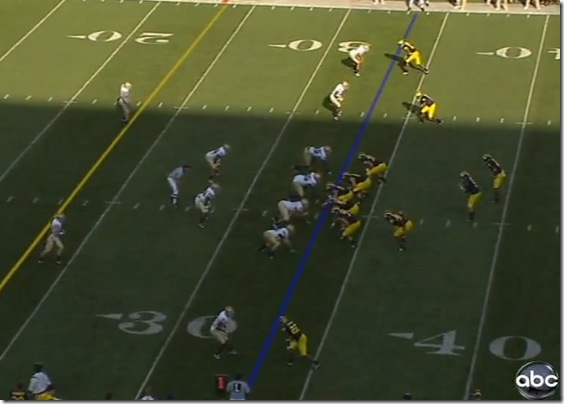
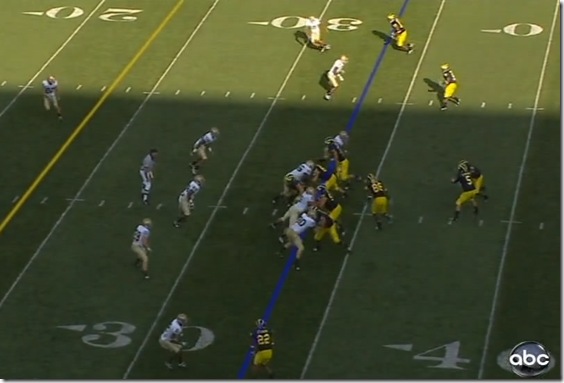
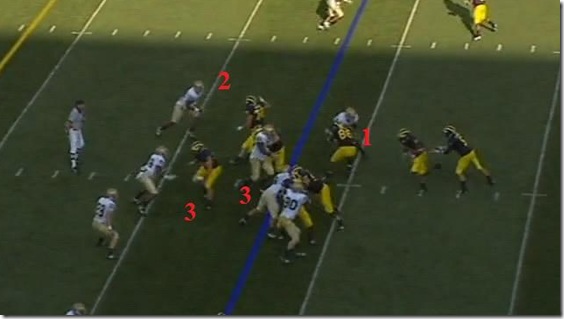
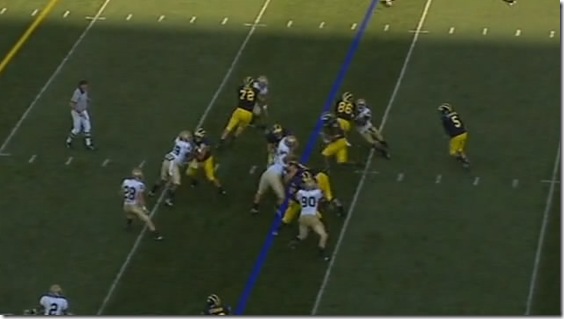
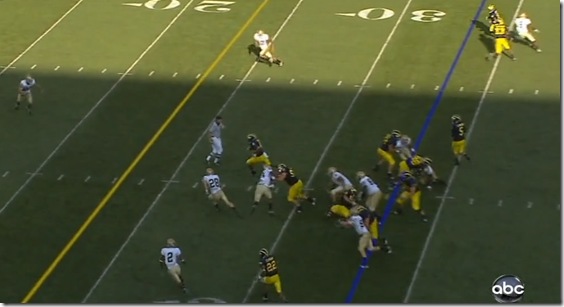
Comments